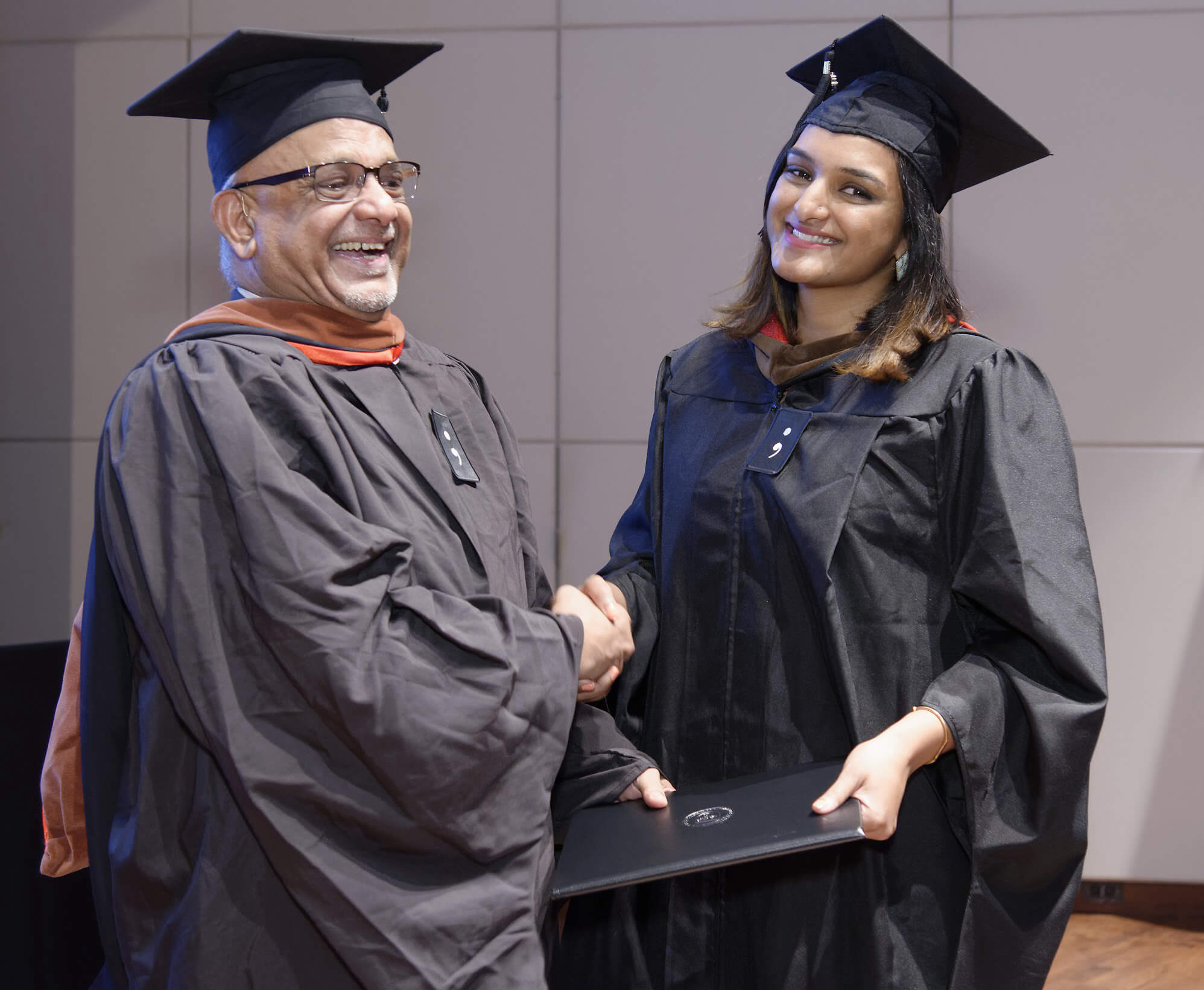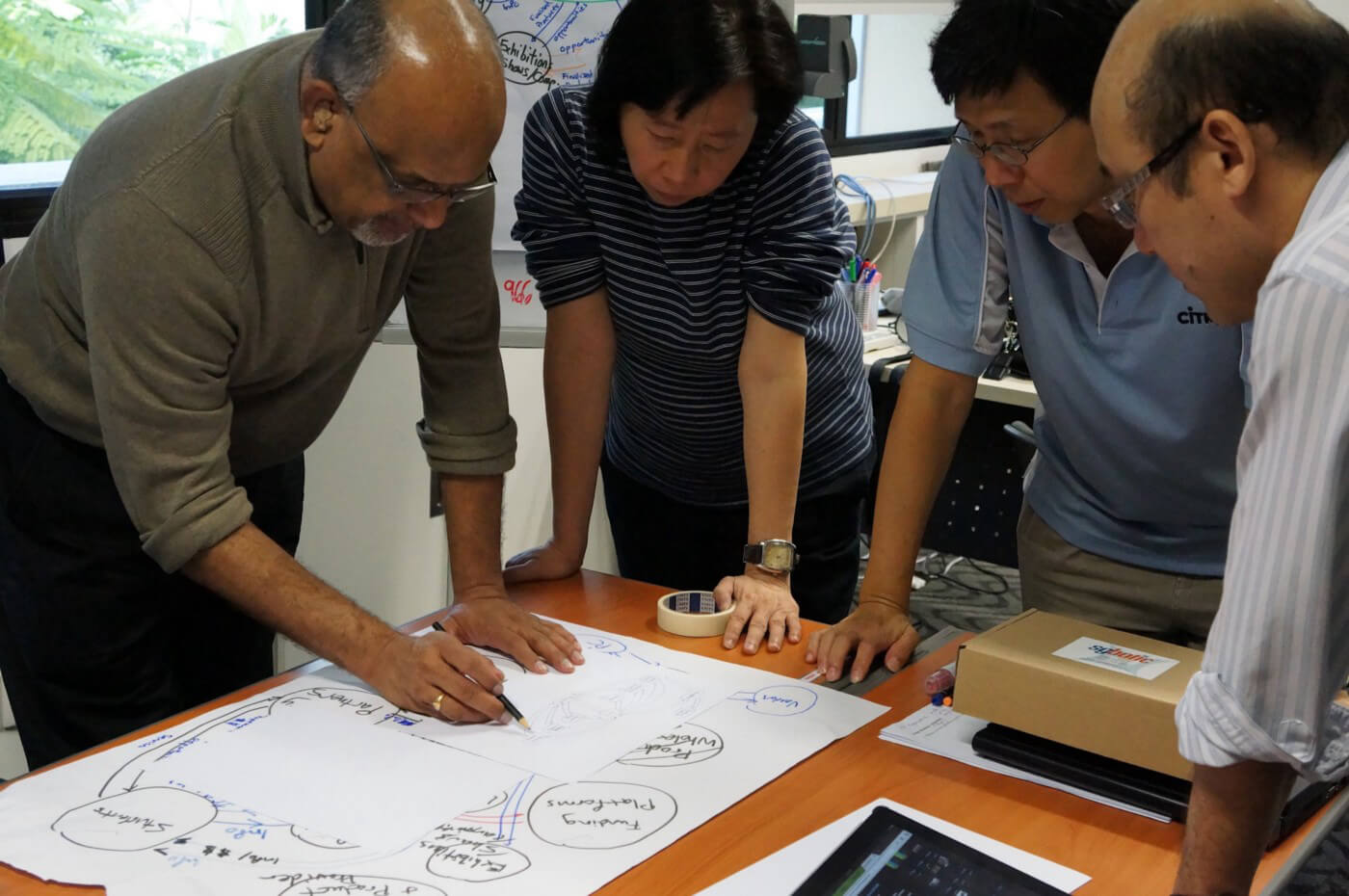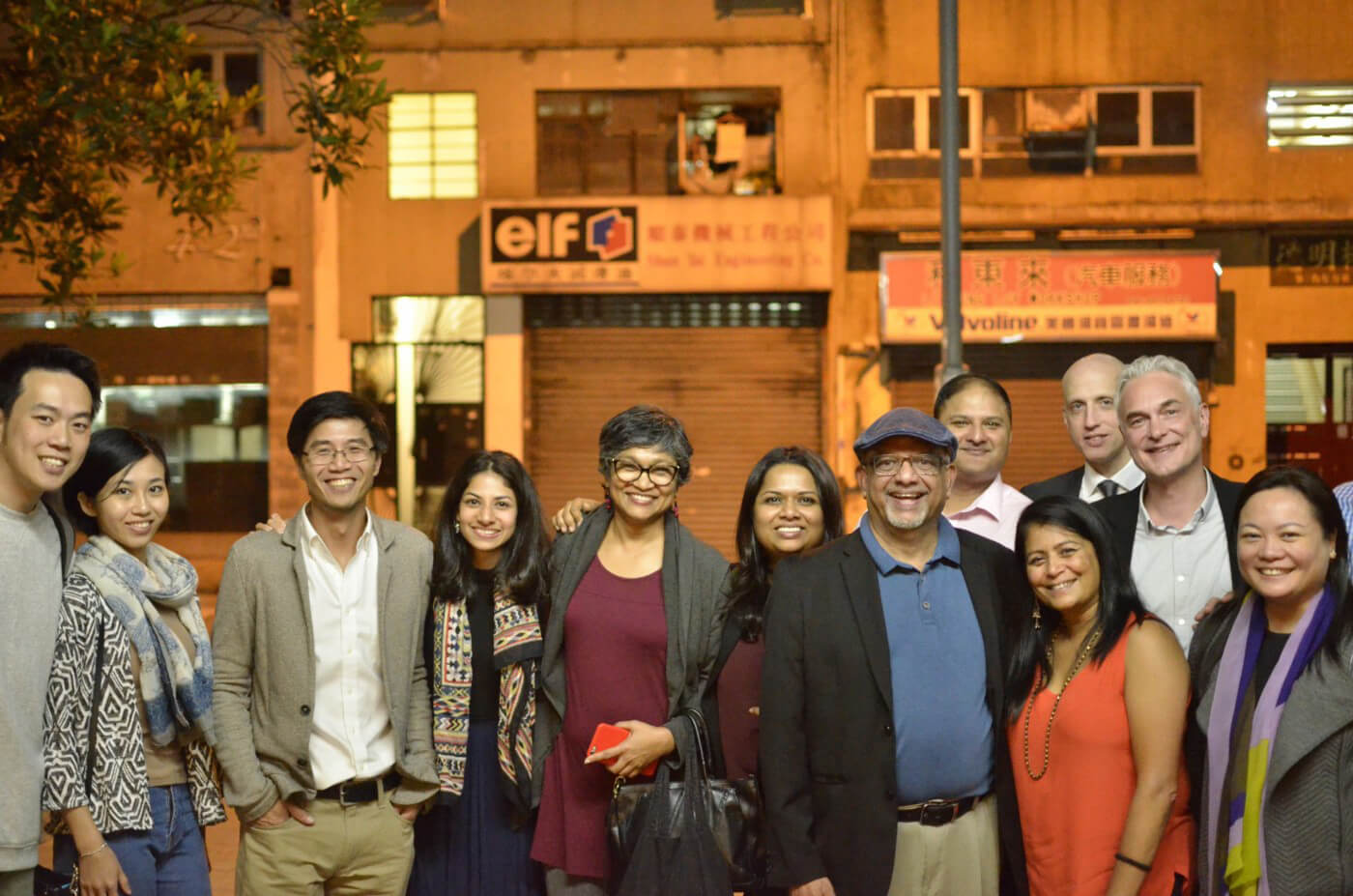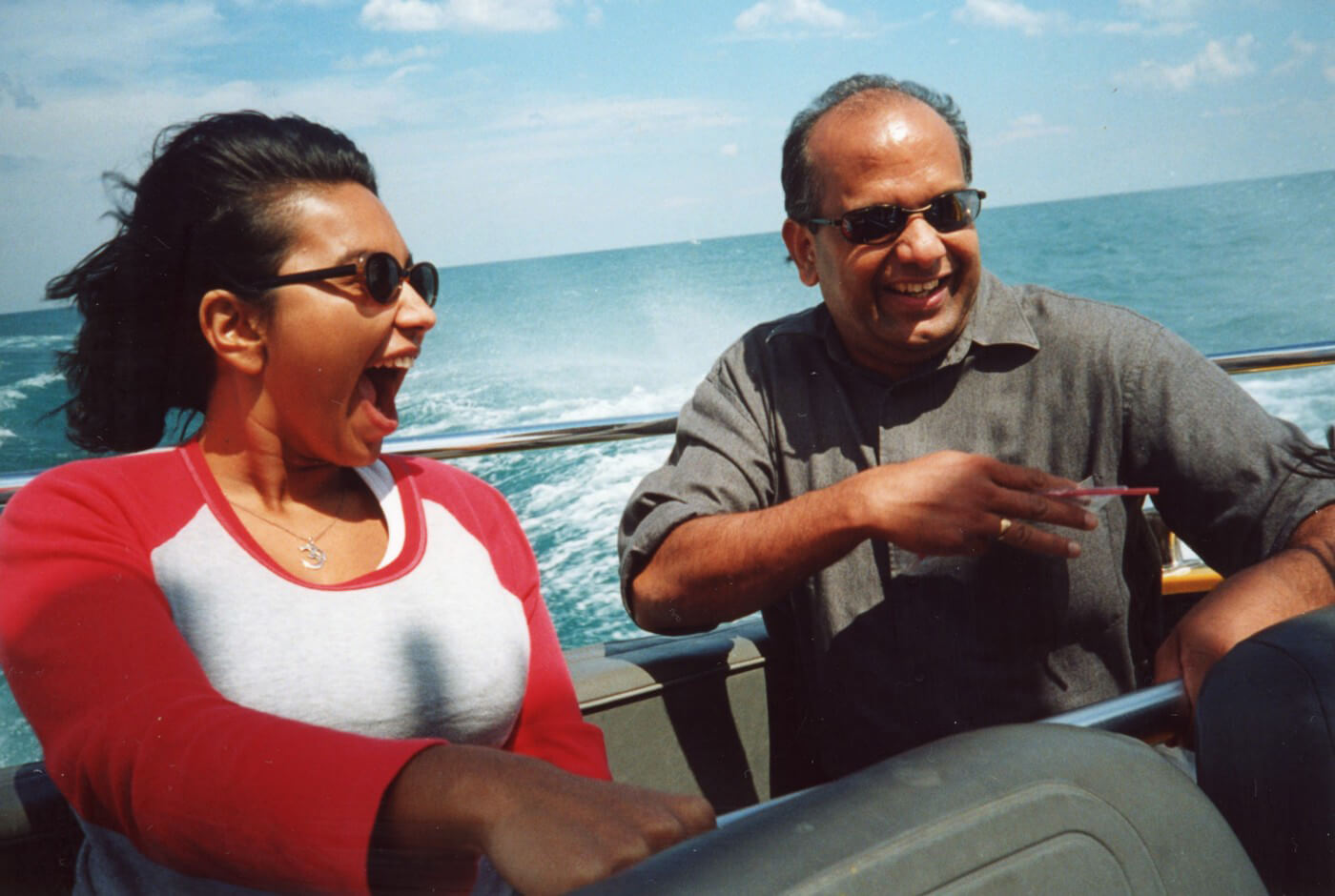Catching up with Vijay Kumar, author of 101 Design Methods
By Sahib Thukral with Shenghui Gao
October 3, 2022

Kumar (MDes 1987) has been leading innovation initiatives in public and private sectors since the 1970s. He has had a long and influential career in design — as a teacher, author, consultant, and, more recently, an advisor to the 2017 Bloomberg Philanthropies’ Mayor’s Challenge and Center for Government Innovation, UAE.
Most designers (see recent profiles on ID alumni Asmina Shaikh and Gauri Bhatt) have used the frameworks and methodologies in his seminal book, 101 Design Methods: A Structured Approach for Driving Innovation in Your Organization. In this interview, Vijay talks about his journey to ID, his design process, and what comes next for him with ID student Sahib Thukral (MDes 2023).
How did you discover design?
My family was interested in design and worked in related areas such as architecture, town planning, structural design, etc. Having grown up in Kerala, where literacy is almost 100 percent, my family put much pressure on me to become something competent. During that time, 40 or 50 years ago, becoming a doctor, engineer, or lawyer was part of the mental model in families. Since all my brothers were engineers, my parents wanted a doctor.
I made models, painted, drew, and immersed myself in creative work. I liked opening mechanisms and repairing things, which made me realize that my passion lay in other fields.
I read an article about NID, the National Institute of Design in Ahmedabad, in a magazine published by the United States Embassy called SPAN. This excellent article introduced me to NID — this design school starting in India, where they experimented with new ways of teaching design. People in India did not know much about design at that time. When I read that article, I decided that this was where I wanted to go, forget about being a doctor! They took only 30 students from the whole nation then, and I got in somehow because my artwork and creative work were good. So I joined NID, a five-year undergraduate program. It was like the Foundation sequence at ID, where you gain many skills and ways of thinking.
How did you come to focus on design methodologies?
Most of my readings of great design thinkers of that time like Christopher Alexander, Chris Jones, and many others impressed me with the value of structured, disciplined processes. I started focusing on developing such processes, methods, and tools for my design projects. That was the beginning of my journey of exploring robust design methodologies.

Workshop for faculty leaders (Singapore Polytechnic University, 2011)
Even though my thesis was in product design at NID, I walked into my final thesis presentation without a model. Everyone was looking for it, and the jury was worried about me. Instead of providing a material model, I presented a process and developed a methodology that would help architects design buildings with climate and environmental considerations.
It was the 1970s, and in a world where people didn’t understand the value of design processes, you had to help them understand it through collaboration and demonstration. The jury appreciated my work, and I was lucky enough to get away with that. I think the school also learned from that experience.
What drew you from India to ID in Chicago?
After NID, I joined my brother, who was an architect. We used to take on architectural and planning projects. I also developed a passion for furniture and environmental design.

With ID alumni and friends (Hong Kong, 2016)
I always wanted to be on the cutting edge and bring new value to my work. I was reading articles about computer-supported disciplined ways of dealing with complex problems. I wanted to connect this to design. In 1983, there were no computers in Kerala that I could use. I felt left behind because I couldn’t practice what I wished to.
I read some articles by ID professor Charles Owen about computer-supported design processes. He called this the Structured Planning Program — it offered ways of dealing with complex problems using computer analysis. So I tried contacting him, but there was no email, no WhatsApp. The only thing I had for such communication was a typewriter. I typed a letter, went to the post office, mailed it, and waited for a reply for three or four weeks. I was persistent. I told him about my interests and that I was fascinated by his work. I asked him if he could advise me on that, and that’s when he let me come to the Institute of Design as a master’s student.
When I came to ID in 1987, Professor Charles Owen was my advisor and helped me understand using computers to tackle complex design challenges. I felt empowered by what ID was offering me. Computers and programming became very accessible. My design practice became structured and more disciplined, and I could easily collaborate with like-minded individuals.
You started as an intern at Doblin and later became the Chief Methodologist. Tell us more about your time there.
I studied with Jay Doblin [former director of the Institute of Design], who started his consultancy, the Doblin Group, with Larry Keeley. I joined the Doblin Group as an intern after completing my ID thesis. That was another turning point in my life after the Institute of Design. I started to understand the limitations of practicing design in isolation. The richness that the diverse team at Doblin brought helped me understand the value of collaboration in design. I understood that my ideas were not perfect and often had to fight myself not to let ego get in the way of my growth.
Everything changed for me once I started exposing myself to user-centered design methods, working with multidisciplinary teams, and looking at things from others’ perspectives — especially the user’s perspective.
I learned that I didn’t have to entirely agree with what I didn’t want to do, but disagreement didn’t mean I couldn’t align with the team’s common goal.
I also understood that I could excel as a designer at Doblin, but it would lead nowhere if I didn’t plan to merge my approach with technology and business goals.
My colleagues at Doblin Group provided me with total freedom and extensive support, allowing me to discover new methods to apply in research, design, and business challenges. I integrated insights from many sources, creating powerful methods and frameworks to address the complex challenges our clients brought.
What comes next in your journey?
Design practice needs to complement clear, comprehensive thinking about complex systems. We cannot use a method for the sake of it. How do we develop clear and powerful mental models that drive our innovation practice?

with niece (Chicago, 2015)
My efforts are currently focused on understanding: What is beyond HCD? How can we help people understand these complementary thought processes driving design processes? How do we develop a good understanding of clear mental models and thought frameworks innovation leaders could use to inspire and impact the world? How do organizational innovation leaders bring more holistic thinking to solve challenging problems? How do we build on the collective intelligence we have today to design a better future for our society and our planet?
What advice would you give today’s design students?
ID students are great at tackling today’s complex problems through human-centered and systems design. On top of all the great things you learn at ID, there are some key questions you need to address and act on continuously:
- What you are designing, is it really good for all involved? Is it good for users, others affected by it, the society overall, and the environment? Are you holistically processing all your insights from these perspectives to drive your innovation outcome? It is not just about developing a better-performing offering anymore. It’s about the larger context of the system, how we can all benefit from it, and the social responsibility that goes along with it.
- Why should someone invest resources and money in your idea? It would help if you were well-prepared to answer questions your clients or organization might ask. You should be able to demonstrate the rigor and discipline of your process, and once the clients see that and understand the underlying connections, they will believe you.
- Seek different “possibilities” through experimentation and exploration. There’s no single answer to a design problem, especially when issues are systemic. Be open to exploration. Don’t look for just one solution. Offering a series of options to choose from and build on will have great value.
To be an innovation leader, you need to shape your thought leadership and frameworks within and across organizations by inspiring teams and other stakeholders to frame ideas into valuable, real-world solutions.